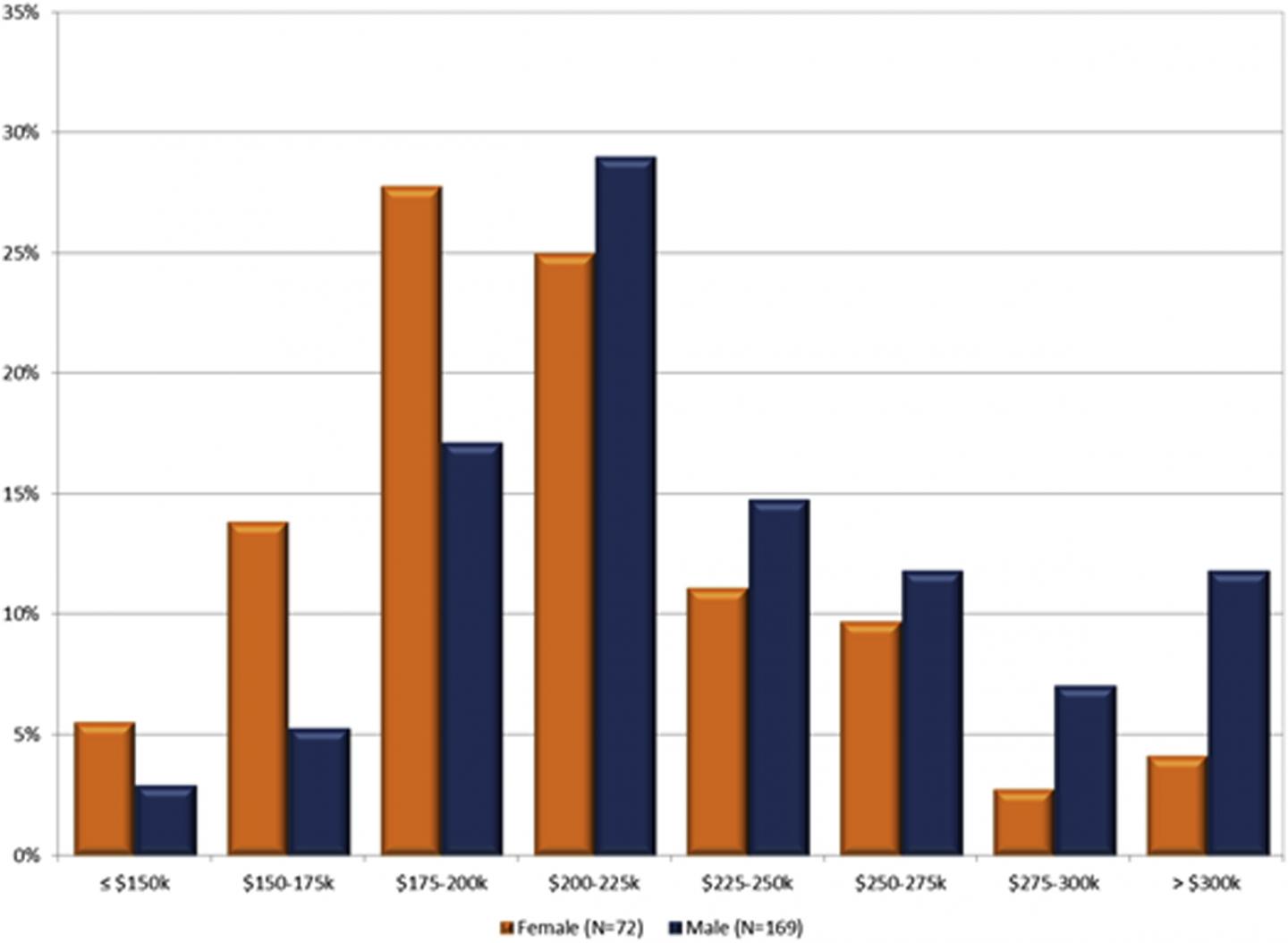Medium- and lower-wage positions get the most attention but a new paper in The American Journal of Medicine says directors of internal medicine residency programs are also paid different based on gender. And that is despite the increased percentage of women faculty in U.S. academic medicine, and that is regardless of region, program type, academic rank, general internal medicine specialty, age, or years of experience. The gap has not narrowed in the last five years
Salary data was divided into $25,000 increments and the mode, or most likely, salary was $200,000 to $225,000 for men and $175,000 to $200,000 for women. Even after controlling for academic rank, career path in general internal medicine, and age, the differences remained. The authors also found that these differences have persisted since at least 2008.
The authors analyzed responses from 241 program directors and program administrators from the annual Association of Program Directors in Internal Medicine (APDIM) survey in August 2012. Historical trends were assessed from similar data from the 2008-2011 surveys.

Program director salary by gender (N=241). Credit: The American Journal of Medicine
A residency program director plays a pivotal role in academic medicine centers for Graduate Medical Education (GME). GME is responsible for training the nation's physician workforce and its importance is reflected in the level of public funding of more than $13 billion per year. Program directors are responsible for the oversight of the curriculum, evaluations, work hours, supervision, fatigue, verifications, scholarship, and schedules of more than 110,000 residents and fellows enrolled in U.S. GME programs.
The authors advise that "Leaders in academic medicine centers, residency and fellowship directors, and all faculty in medical education need to be aware that the salary disparities cited decades ago still persist in this important population of medical educators. Reporting this information is an important step in addressing the disparity in an effort to improve it. Sponsorship of women without awareness of, and subsequent advocacy for, salary equity is unlikely to correct these disparities."






Comments